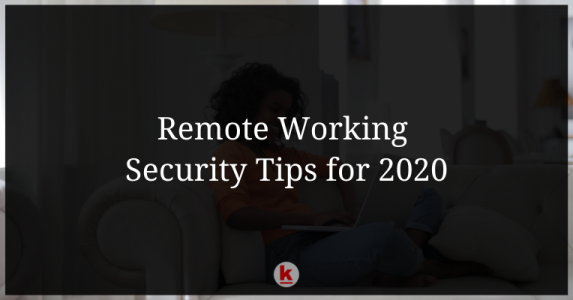
Remote Working Security Tips for 2020
In the last decade, teleworking has grown in popularity in many professionals and organizations globally A research conducted in 2018 showed that two-thirds of the people from across the globe work away from the office at least once every week. Today, in the wake of the COVID10 epidemic, both the public and private sectors have been offering employees the option to work from home in an effort to keep their workforce healthy and safe from the virus. Allowing your employees to work remotely reaps numerous benefits, including providing a large pool of talent roles in the hiring process, increased autonomy for workers, reduced commuting time, and lowering the risk of being exposed in a possible pandemic.
Although working from home is a great opportunity for organizations to minimize costs, it presents a unique challenge of information security. Usually, remote working environments do not have similar security safeguards as in the office. When your employees are in the office, they work behind layers of preventative security controls. However, once the computers leave the perimeter of your office, new risks arise for the company, and additional security policies become essential.
Security Risks to Remote Workers
While devising additional security measures for your organization in teleworking, you will need to identify the possible risks likely to affect workers. The most common risks encompass:
- Unsecured Wi-Fi networks: A vast majority of workers will be working in their homes where they can secure their network connections. However, some may be dependent on unsecured public Wi-Fi networks, which are prime spots for hackers to spy on your internet traffic and collect confidential information from your organization.
- Phishing targeting remote workers: Since most workers will be in their homes, social engineered content in the form of phishing will be on the increase. Malicious parties posing as the management team will be sending out emails to employees with the aim of obtaining personal information from your organization.
- Using personal devices: Not all organizations will afford to provide employees with necessary resources, including laptops and phones, to facilitate teleworking. Some workers will be forced to use personal devices and networks, which lack the tools built into the business, including strong antivirus software, automatic cloud backups, and customized firewalls. This will increase the risk of malware, finding its way into your business software.
Nevertheless, if you are armed with the right knowledge and tools, you can stave off these threats and work efficiently.
Best Practices to Mitigate Risk of Working Remotely
Cyber Security Tips
- Avoid Public Wi-Fi
Public Wi-Fi networks introduce significant security risks in two ways. First, other people with access to the same network are key security threats, especially when there are customized firewalls between your connections with them. Secondly, any interested observers within your network and any other public network are able to monitor data traffic as it travels through the network. With these risks, it is important to protect your PC and encrypt your traffic with virtual private networks and remote desktop protocols. These measures will help encrypt data traffic as it travels through servers.
- Encrypt Sensitive Data
While working from home, sending emails with sensitive data will be a major risk since a malicious party can intercept the email. Encrypting the data attached to the email prevents unintended recipients from viewing the information. Additionally, ensure your device is set to have all sensitive data encrypted.
- Secure your home Networks
One of the basic security measures on your router involves switching on the encryption (WPA2 or WPA3) button. This type of encryption standards helps scramble information sent through a wireless network so that malicious parties do have access to the data. If you do not have these encryption standards, try updating your router or replacing it with a new one.
- Backup Your Data
Due to the hustles and bustles of working from home, data can be lost through human error, cyber-attacks, or physical damage of devices. As an organization, cloud backups customized and scheduled every other minute help to recover data in an event where data loss is recoverable.
Physical Security Tips
- Lock Your Device
If you are working remotely from a public place or in a house with people whom you cannot share information with, it is important to secure your device through strong passwords and step-two authentication factors.
- Block Sight Lines
When working in a public place, look out for sightlines. A hacker standing behind you can see every detail you are typing and identify personal information, including passwords. Leaving your device unattended can compromise your data with a USB stick that types preprogrammed sequences at 1000 words per minute
Formalizing Security with Remote Work Policies
While good technologies work in reducing security threats when your employees are working remotely, it is important to enforce remote work policies among employees. Both technical and administrative controls will help keep your data safe and enhance business continuity as more cities remain under lockdown.
The RedAlkemi team hopes you’re keeping safe during the Pandemic Coronavirus. Take a look at tips to stay productive during Coronavirus and how to transform your work amidst COVID19.
Want to publish your content on the RedAlkemi Blog?
The RedAlkemi blog is a collaborative space for guest bloggers to submit quality content on Digital, Web Development and Graphic Design. If you’d like to reach a wider audience of professionals through the RedAlkemi blog, write to us at blog@redalkemi.com.